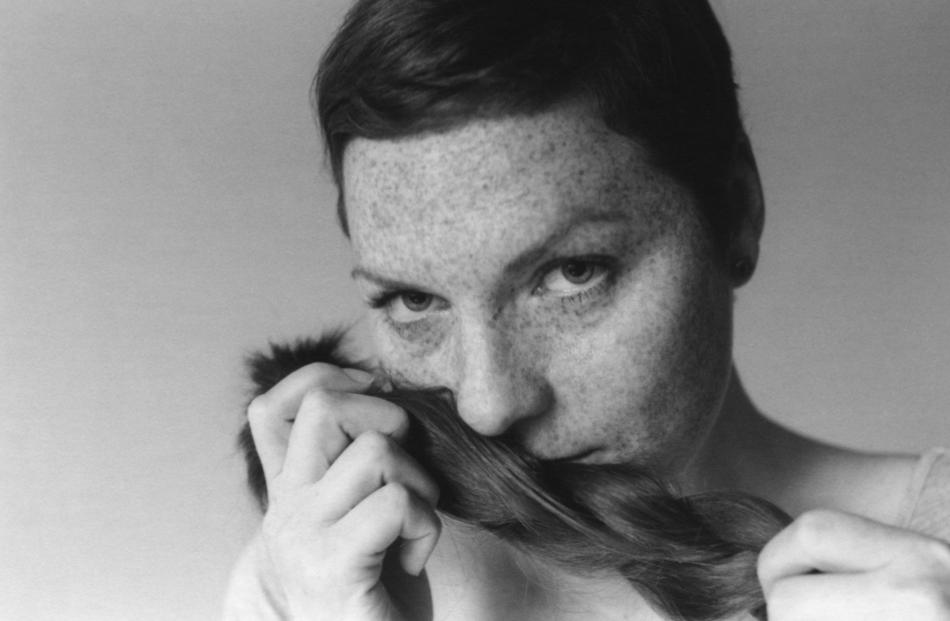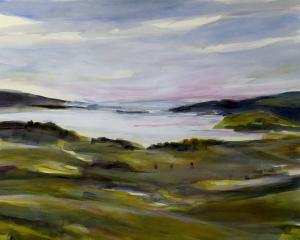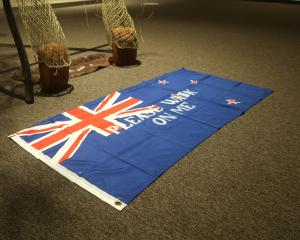When Volker Gerling goes walking he has a different mission in mind than most. He will bring his journeys to life in a show to be staged at Wanaka’s Festival of Colour, he tells Rebecca Fox.
Volker Gerling always knew he wanted to tell stories, he just did not know which stories to tell.
That is until he discovered the art of the flipbook - a series of pictures that vary from one page to the next, so that when the pages are turned rapidly the pictures appear to move.
''For me this is a fascinating way to tell stories.''
He then realised the best way to do this was by walking and taking photos along the way.
Since 2003 he has walked nearly 4000km, taking photos of the people he meets.
His longest walk was about 1200km through Germany to Switzerland.
''I'm not looking for people. I realise people in my stories have to come to me. I have no preferences. I'm curious and open-minded about people.''
Of course, he hopes to come across people who have stories worth telling.
''The big stories and the small stories.''
Part of the secret to his work, he says, is that people do not perceive him to be an artist, instead seeing him as a distance walker.
Gerling, who is based in Berlin with his partner and two children, does not tell people what he is doing when he takes their pictures.
''I take their picture 36 times in 12 seconds. My camera can sound quite loud, so it shakes people out of their stance and back at themselves.
''[What happens] in that 12 seconds it is not planned or staged and it reveals a certain truth.''
The process allows him to capture the ''real character'' of people, he says.
His fascination with capturing people's images began as a child when he first discovered photography.
However, that went by the wayside when he discovered film. He attended film school near Berlin with the goal of becoming a film director.
''By chance I realised I could make small documentary films using photography flipbooks.''
In 2002, he took an old wooden kitchen tray and transformed it into a hawker's tray. With room on it for six flipbooks it became his ''travelling exhibition''.
He walked through Berlin showing his flipbook ''movies'' putting an old honey jar underneath so visitors could pay a symbolic ''exit fee''.
''In cities they often realise the special project they are involved in. Sometimes they are stunned when they see the flipbooks.
''Nobody expects a travelling exhibition with flipbooks.''
He did not expect young people to be very interested in the process, and was surprised to discover they were fascinated.
''I thought they'd see it as old-fashioned; boring.''
Gerling then decided he wanted to travel and headed off with his hawker's tray and camera.
He did not take money, instead opting to live off what people gave him.
''It is possible to earn money showing flipbooks to people, but you are spending money they gave you - that is something totally different ... than taking money out of a money machine.''
In 2005, Gerling realised he could display his work to a larger audience by projecting his flipbooks on to a screen by holding a selection of his favourite portraits under a video camera. .
''It's really important to tell the stories behind the encounter. It's not all about photo faces.
''I try to find universal stories that ... he or she can feel a part of, but you don't find those stories on each street corner.''
An example of a special story was that of three people he met in southern Germany: one woman and two men who lived happily together. She was married to one and had an affair with the other. Her husband then invited the other man to live with them.
''They're now inseparable. You can see that in the photograph - the laughing, the joy; it's fascinating.''
Another story came about a different way. Gerling met Katja after one of his shows and emailed her a few days later asking if he could photograph her. However, when they finally met two years later she had short hair.
She had cut it as part of her grieving process after her brother and father died within 12 months and she then separated from her partner.
''She cut off her ponytail, put it in a bag and forbade herself to long for it or cry for its loss.
''When we met in her apartment, after a while she brought out her ponytail and permitted herself to do what she had forbidden. Immediately after the photos were taken, she put her hands in front of her face and wept bitterly.''
He met some great people along the way really enjoying the ''slow'' experience of walking. Gerling averages one flipbook a week.
''Walking is the best pace to travel at.''
While people often asked where the best stories came from he said there were no specific places.
''I had good feelings, good experiences. Everywhere I go I find great people.''
In the early days, Gerling travelled with just a backpack but more recently has towed a small trailer with him.
''The backpack got really heavy.''
While most of his walking has been in Germany, he has been commissioned to do a walk this summer in England and was commissioned six years ago to work in Canada.
''I've also been invited to China in October which will be very interesting for me. I'm curious to see how people react to my art work. The Western world is quite similar in being attracted to my work.''
Over the years, Gerling has created 100 flipbooks but says only 50 are good enough to share with an audience.
His visit to Wanaka with his show ''Portraits in Motion'', which won the Edinburgh Fringe Festival 2015 total theatre award for innovation, is his first to New Zealand.
He is spending six weeks touring festivals in Australia and New Zealand which, he says, is not long enough for a walking trip.
''It's not the walking project I'd love to do. But six weeks is a long time to be away from family.''
Gerling does hope to squeeze in some time to create a New Zealand flipbook.
''I cannot force it though. I just have to be open minded and curious.
''It's not good if I expect too much. I have to wait for it to come to me.''
To see
Festival of Colour, Portraits in Motion, Wanaka Masonic Lodge, April 4-5.













